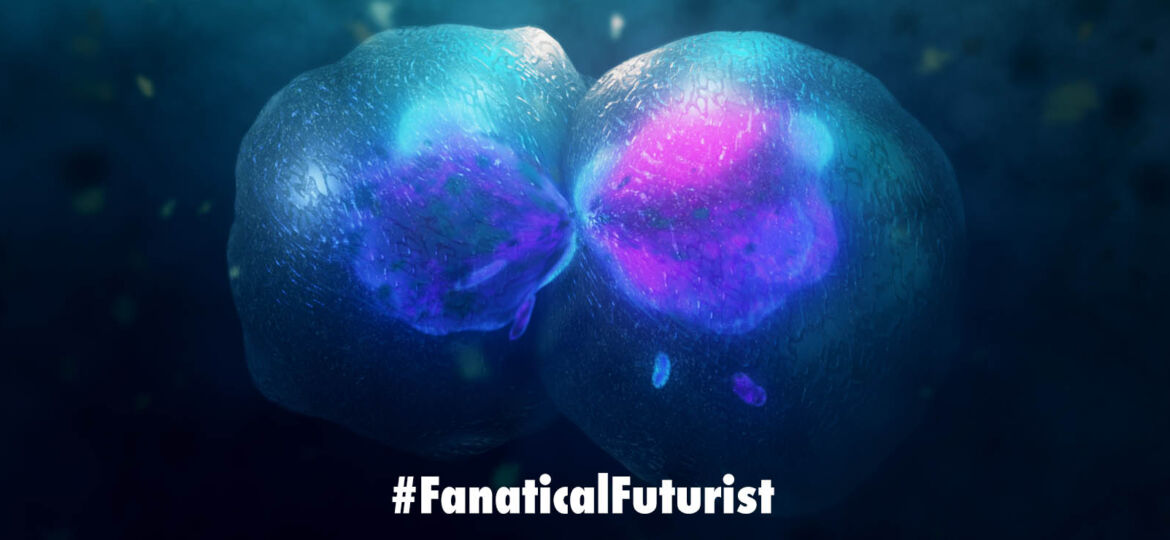
WHY THIS MATTERS IN BRIEF
AI, supercomputers and scientists created the world’s first living programable robots from frog cells, and they just spontaneously reproduced themselves surprising the everyone …
 Love the Exponential Future? Join our XPotential Community, future proof yourself with courses from XPotential University, read about exponential tech and trends, connect, watch a keynote, or browse my blog.
Love the Exponential Future? Join our XPotential Community, future proof yourself with courses from XPotential University, read about exponential tech and trends, connect, watch a keynote, or browse my blog.
Here’s a question: When do robots become living organisms? Or vice versa …? Well, now in a major world first, again, the US scientists who used Artificial Intelligence (AI) and supercomputers to create the first Xenobots – which were both the first living robots as well as the first “programmable” organisms – say the life forms can now reproduce in frankly an insane and really freaky way. And it’s a way not seen in any other plants and animals anywhere …
Formed from the stem cells of the African clawed frog, Xenopus Laevis, from which they take their name, Xenobots are less than a millimeter (0.04 inches) wide. The tiny blobs were first unveiled in 2020 after experiments showed that they could move, work together in groups and self-heal. and then, in time, they got faster and smarter at everything …
Now the scientists that developed them at the University of Vermont, Tufts University, and Harvard University, say they have discovered an entirely new form of biological reproduction different from any animal or plant known to science.
“I was astounded by it,” said Michael Levin, a professor of biology and director of the Allen Discovery Center at Tufts University who was co-lead author of the new research.
Spoiler alert: They reproduce!
“Frogs have a way of reproducing that they normally use but when you … liberate (the cells) from the rest of the embryo and you give them a chance to figure out how to be in a new environment, not only do they figure out a new way to move, but they also figure out apparently a new way to reproduce.”
Stem cells are unspecialized cells that have the ability to develop into different cell types. To make the Xenobots, the researchers scraped living stem cells from frog embryos and left them to incubate. There’s no manipulation of genes involved.
“Most people think of robots as made of metals and ceramics but it’s not so much what a robot is made from but what it does, which is act on its own on behalf of people,” said Josh Bongard, a computer science professor and robotics expert at the University of Vermont and lead author of the study. “In that way it’s a robot but it’s also clearly an organism made from genetically unmodified frog cell.”
Bongard said they found that the Xenobots, which were initially sphere-shaped and made from around 3,000 cells, could replicate. But it happened rarely and only in specific circumstances. The Xenobots used “Kinetic Replication” – a process that is known to occur at the molecular level but has never been observed before at the scale of whole cells or organisms, Bongard said.
With the help of AI the researchers then tested billions of body shapes to make the Xenobots more effective at this type of replication. The supercomputer came up with a C-shape that resembled Pac-Man, the 1980s video game. They found it was able to find tiny stem cells in a petri dish, gather hundreds of them inside its mouth, and a few days later the bundle of cells became new Xenobots.
“The AI didn’t program these machines in the way we usually think about writing code. It shaped and sculpted and came up with this Pac-Man shape,” Bongard said. “The shape is, in essence, the program. The shape influences how the Xenobots behave to amplify this incredibly surprising process.”
The Xenobots are a very early technology of their kind – think of a 1940s computer – and don’t yet have any practical applications yet. However, this combination of synthetic biology and AI could potentially be used in a host of tasks in the body and the environment, according to the researchers. This may include things like collecting microplastics in the oceans, inspecting root systems and regenerative medicine.
While the prospect of self-replicating biotechnology could spark concern, as well as ethical debates, the researchers said that the living machines were entirely contained in a lab and easily extinguished, as they are biodegradable and regulated by ethics experts.
The research was partially funded by DARPA, a federal agency that oversees the development of bleeding edge technology for military use, and who are trying to create living sensors as I reported a while ago – a program that these little do-hickies would fit into nicely.
“There are many things that are possible if we take advantage of this kind of plasticity and ability of cells to solve problems,” Bongard said.
The study was published in the peer-reviewed scientific journal PNAS.
















